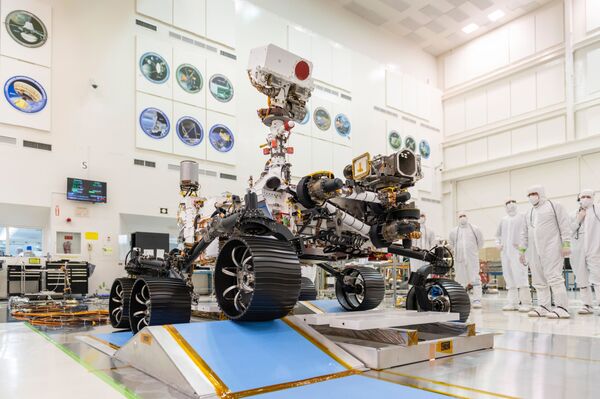Opportunity, Curiosity and Spirit have carried all the necessary top-notch equipment to Mars to help researchers here on Earth to “see” and scrutinise every fragment of the Red Planet’s terrain. The new Mars 2020 Perseverance rover will go still further and learn how to “hear” (and teach the researchers) what the second-smallest planet in the Solar System sounds like.
Perseverance, which is set to travel on its mission to Jezero Crater on 18 February 2021, boasts a pair of SuperCam microphones.
“It is stunning all the science we can get with an instrument as simple as a microphone on Mars”, said Baptiste Chide, a postdoctoral researcher at NASA’s Jet Propulsion Laboratory, who worked on the microphones, one of which was placed atop the rover’s mast.
It will serve two purposes – science and engineering. In the first place, it will record the natural sounds that roar though the Martian surface, with the mast carrying a microphone that is able to be pointed in the direction of a potential source of sounds.
Separately, like its predecessor, the Curiosity rover’s laser-zapping ChemCam can use an infrared laser beam to heat rocks, so that the sound of the laser blasting them will be also recorded for scientists to study the buildup of Martian regolith and other ambient features.
In terms of the engineering aspect, the microphone will listen to the technical side of the rover’s work, like how the mast moves or the wheels turn, with the latter potentially serving as a crucial diagnostic tool.

The second microphone is projected to be a genuine “mic drop”, as it will aim to record the tiniest sounds during the mission’s complicated entry, descent and landing. Scientists expect it to record pyrotechnic devices going off to release the parachute and the Martian winds, just to name a few sounds.
Scientists warn, however, that the audio diligently captured by Perseverance may not sound quite the same on Mars as it would here on Earth. The reason is quite simple: the Martian atmosphere is only 1% as dense as Earth’s atmosphere at the surface, and its composition is also different, which naturally affects sound emission and propagation.

